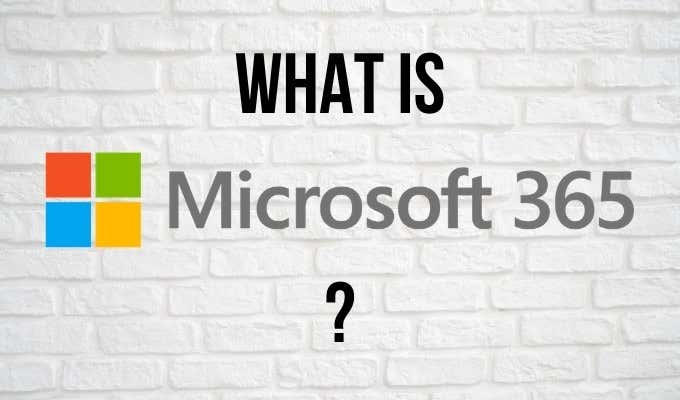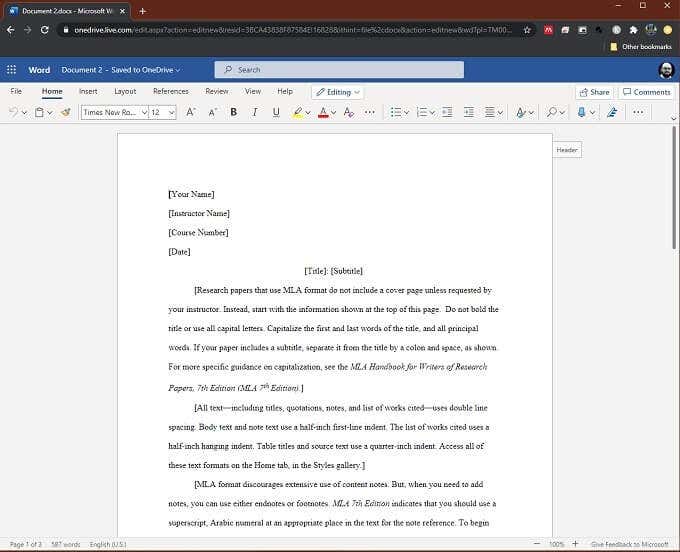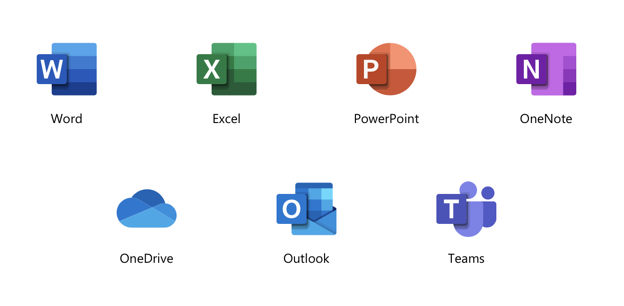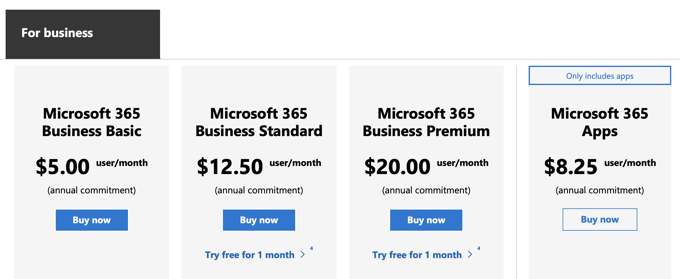Microsoft 365 is a subscription-based suite of cloud services. It used to be known as Office 365, but now includes so much more than just the core Office functionality that it seems a rebranding was in order.
The entire world of computing is moving rapidly towards SaaS (software as a service) and subscription models for software rather than selling licenses outright. Microsoft 365 is a blend of both developments. If you haven’t encountered it before, it can come as quite a bit of computing culture shock. So let’s lay all those doubts to rest and explain exactly what Microsoft 365 is.

Contents
A Cloud What Now?
The “cloud” refers to the computers that run in data centers all over the world. If you use a service like Gmail or Drive, then you’re using the cloud. We access cloud-based services through the internet. So, for example, when you copy a file into your DropBox folder, that information is sent to a computer in a data center, which then stores it for you.
With cloud-based software you don’t need a monster computer at all. Most of the heavy lifting is done by the remote computer. All you need is a working internet connection. That doesn’t mean your local computer does nothing!

Some aspects of the service run locally and others run on the remote machine. With cloud applications such as Google Docs, it’s even possible to keep working when the internet is down, with everything syncing up when the connection is restored.
How Does Microsoft 365 It Work?
To use Microsoft 365 all you have to do is sign up for a Microsoft Account, if you don’t have one, and then pay the monthly fee. There are various plans available, which we’ll look at in more detail below.
Once you’ve signed up, you can access the cloud services from any browser that’s connected to the internet. Microsoft 365 also includes software that you can download to your computer and use offline. Let’s look at the offer in more detail.
Microsoft 365: What Do You Get?
Microsoft is offering different packages of 365 meant for different audiences. Here are the three levels:
- Home users
- Business users
- Enterprise clients
We’re only going to concentrate on the first two types of plans, since if you’re an executive from a big company reading this, you’re better off just calling Microsoft themselves for a quote.

The cheapest option is Microsoft 365 Personal. This is a single-user subscription that includes all of the apps and services the home tier offers.
So you’ll get Word, Excel, PowerPoint, OneNote, Outlook, Access and Publisher. The last two on the list are only available on PC. Speaking of which, you also get to unlock the full versions of the Office mobile apps on Android and iOS. Usually those apps only let you open documents and view them if you aren’t a paying subscriber.
What Does Microsoft 365 Cost?
There’s a variety of pricing options when it comes to Microsoft 365. We’re only going to look at the public pricing for home and small business users. Educational and enterprise pricing is something you’ll have to negotiate with Microsoft directly.
Also, before we talk about specific pricing, be sure to check whether you already have free access to Microsoft 365. Many companies have a site licence that grants Microsoft 365 to their employees. Which also means you can use it on your personal machine. If you’ve bought a new computer recently or plan to, you might also get a few months to a year of access to Microsoft 365 included.

For those who have to pay the usual way, there are two main options. You can pay monthly at a relatively higher fee or buy annually. Annual plans effectively give you two months free for every year you subscribe. So it’s not a major difference.
Home users have the following options:
- Microsoft 365 Personal – single user subscription at $6.99 per month or $69.99 per year
- Microsoft 365 Family – 6-user licence subscription at $9.99 per month or $99.99 per year
As you can see, even if you’re only in a 2-person household, the family plan offers the best value. Microsoft has done a good job of separating user sub-accounts. As long as the main account is in good standing, everyone will have the same experience as the primary user.

Business subscriptions are a little more diverse:
- Business Basic includes cloud services and only web and mobile versions of Word, Excel and PowerPoint at $5.00 per user, per month. Paid annually.
- Business standard adds the desktop versions of Word, Outlook, Excel, PowerPoint, Publisher and Access at $12.50 per user, per month. Paid annually.
- Business Premium included everything in standard, plus advanced security features for $20.00 per user, per month. Paid annually.
- Microsoft 365 Apps only has OneDrive along with the premium desktop apps for $8.25 per user, per month. Paid annually.
Apart from the apps-only business subscription, the main value here are the Teams, Exchange and Sharepoint services. These apps allow for easy collaboration with your coworkers. Although the home version of Microsoft 365 does include Skype with 60 minutes of landline calls for free.
Can I Still Purchase Microsoft Office?
Yes! Microsoft still offers a one-time purchase of Office. This doesn’t include any of the cloud services. You also only get three applications: Word, Excel and Powerpoint. These are also the classic versions of the apps without the 365 cloud features you get with the subscription model.

These apps can also only be used on a single computer, so you’ll have to pay the one-time price for multiple computers repeatedly. We don’t recommend that most people go down this route, even students. Especially since certain student-oriented laptops can come with a free year or two of Microsoft 365.
What Are the Main Advantages of Microsoft 365?
So why get Microsoft 365 instead of making a one-time purchase of Microsoft Office? Here are the main benefits:
- You always have the latest version of included Microsoft Apps
- You get a large amount of cloud storage
- Unlock full versions of mobile Office apps
- Collaboration and communication with coworkers is much easier
- You can log into any computer and start working where you left off

Very few people work in a bubble these days, which makes this new cloud-based offering the most sensible choice for the majority of users.
Who Should Get Microsoft 365?
If you’re okayK with paying a monthly fee, we feel comfortable saying that just about anyone would be happy with a Microsoft 365 subscription. It’s an especially good value when you consider the family plan, which lets five independent users each load their computer with the entire Office suite and get access to their own terabyte of cloud storage.
The main caveat is that you’re in this relationship for perpetuity. You’ll be paying the fee for as long as you need the service. If you want to have productivity apps on a computer that’s not going to have internet access, then a case can be made for the once-off purchase option. However, for such users we’d recommend saving your money and opting for one of the many free Microsoft Office Alternatives.





